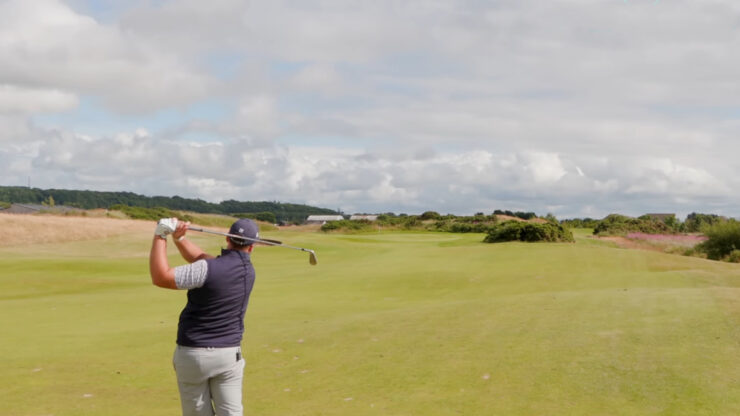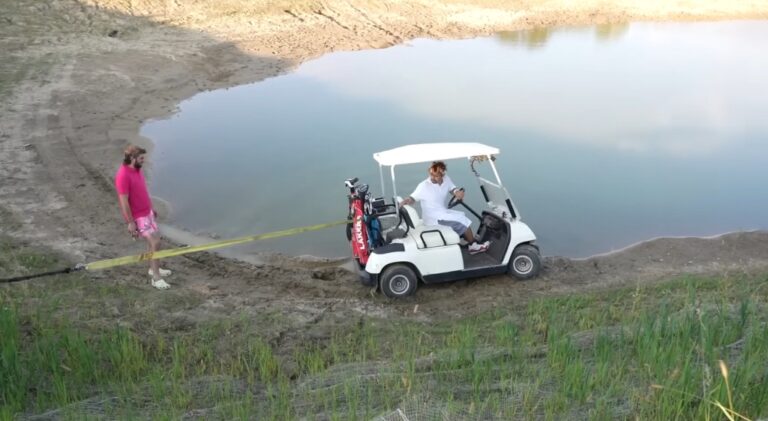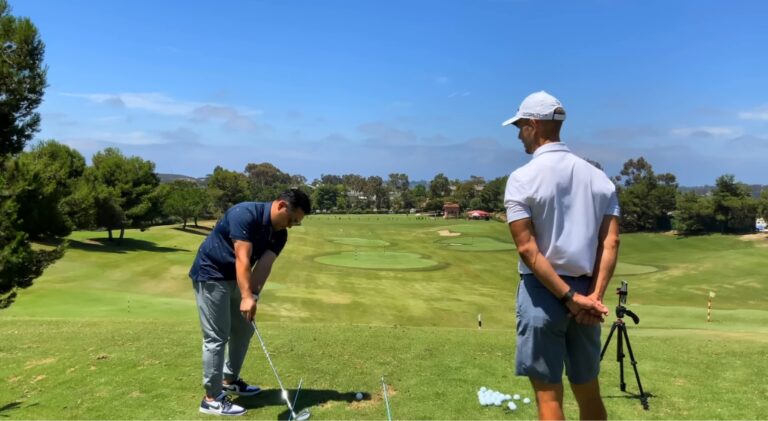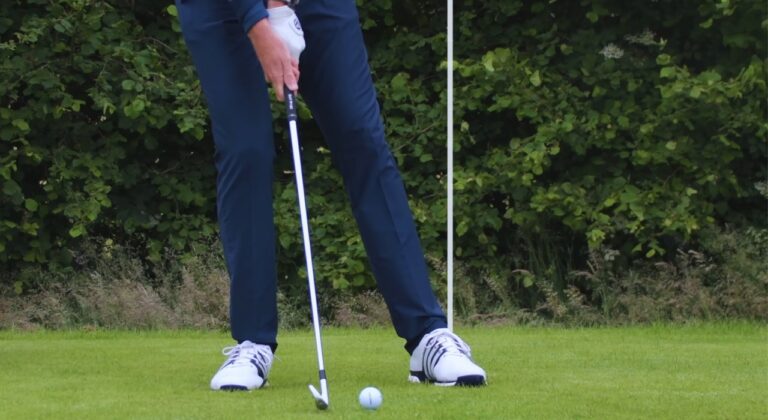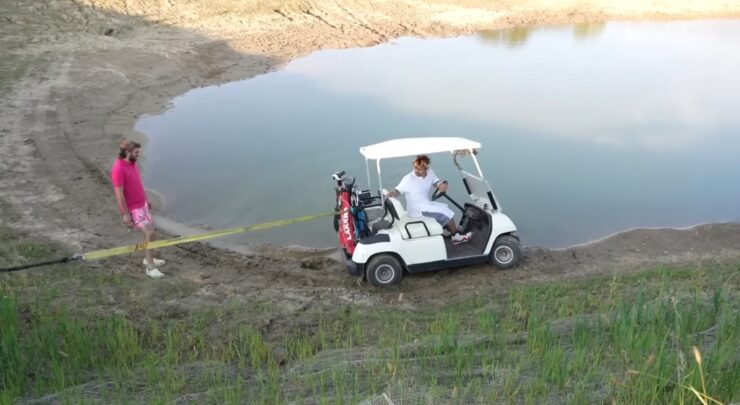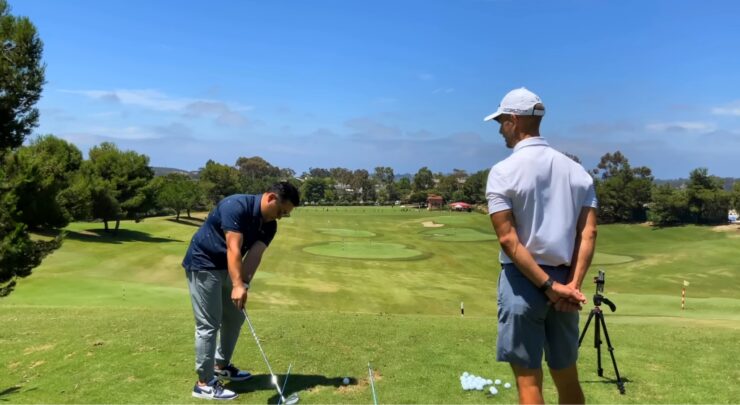Welcome Golfers! Ever wondered why some shots soar high and others stay low? It’s not just about power; it’s about the launch angle. This refers to the initial trajectory the ball takes off the clubface, which can make or break your game.
Golf isn’t just a sport; it’s a science. Every swing you make, every ball you hit, there’s physics involved. The launch angle is a result of this intricate dance between force and motion. When you strike the ball, the angle at which it takes off is influenced by several factors, which we’ll explore in this article.
Fun Fact: Did you know that the average launch for professional golfers is between 10 to 15 degrees? But remember, what works for pros might not work for everyone!
The Launch Angle
Let’s get straight to it. Launch angle is the angle between the ground and the ball’s initial flight path. Think of it as the ball’s take-off. A higher angle means the ball will fly higher, while a lower angle keeps it closer to the ground.
The clubface’s position at impact and the club’s loft play pivotal roles in determining the launch. If the clubface is open, the ball tends to have a higher angle. Conversely, a closed clubface can result in a lower angle.
The loft of the club, on the other hand, is designed to give you varying launch angles. That’s why drivers have less loft, aiming for distance, while wedges have more loft, aiming for height.
Pro Tip: Always ensure your clubface is clean. Dirt or debris can significantly affect the ball’s launch angle and overall flight.
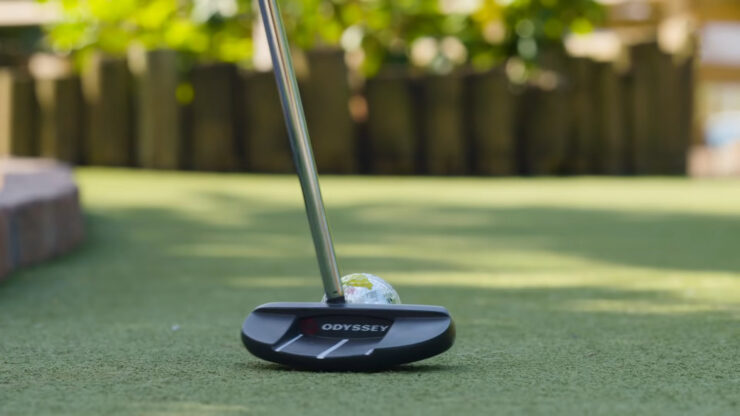
Influencing Factors
Choosing the right club is paramount. Each club is designed with a specific loft to achieve a particular launch angle. For instance, a 3-iron will have a much lower angle than a 9-iron. Knowing which club to use in different situations can significantly influence your shot’s success.
| Club | Average Loft | Average Launch |
| Driver | 9-13° | 10-15° |
| 3-iron | 20-23° | 14-18° |
| 7-iron | 30-34° | 18-22° |
| Pitching Wedge | 45-50° | 25-30° |
Swing Path and Attack
Your swing path and attack angle (at which you strike the ball) also play a role. If you hit the ball on an upward trajectory, you’ll likely achieve a higher angle. Conversely, hitting downward results in a lower angle.
Tee Height
It might seem minor, but the height at which you tee your ball can influence the launch. Teed up higher, the ball is more likely to have a higher angle, especially with drivers.
| Tee Height | Change in Launch |
| +1 inch | +2° |
| -1 inch | -2° |
Interesting Fact: A study showed that adjusting tee height by just an inch can change the launch angle by up to 2 degrees!
Importance of Launch
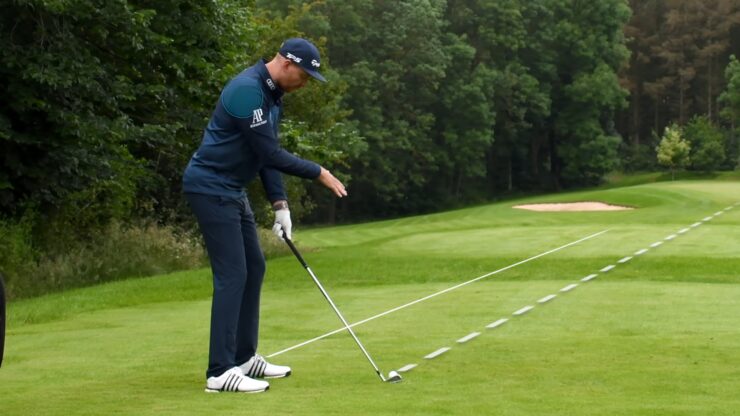
Now, we need to discuss distance vs. accuracy. While we all love to see our balls fly far, accuracy is equally crucial. A higher launch can give you more distance, especially if you have the speed to back it up. However, with increased height, there’s a risk of the ball being affected more by wind and other elements, which can compromise accuracy.
The launch doesn’t just determine how high the ball goes; it also affects the ball’s overall flight path. A lower angle might result in a piercing trajectory, cutting through the wind, while a higher angle could lead to a ballooning effect, where the ball rises quickly but falls short.
Your understanding of launch can significantly influence your club choices. If you’re playing on a windy day, you might opt for clubs that promote a lower angle to keep the ball under the wind. On a calm day, you might choose clubs that give you a higher trajectory for those extra yards.
Fun Fact: The optimal launch angle can vary based on environmental conditions. On a day with high humidity, the ball can travel farther with a higher angle!
Optimal Launch Angles
So, what’s the magic number? Well, it’s not that simple. The ideal launch varies based on your swing speed, the club you’re using, and the conditions you’re playing in. However, for many amateur golfers with an average swing speed, a launch between 12-15 degrees with a driver can be a good starting point.
As we move from drivers to irons and then to wedges, the optimal angle increases. This is because, with shorter clubs, the primary goal shifts from distance to control and precision.
It’s essential to understand that there’s no one-size-fits-all in golf. What works for one golfer might not work for another. It’s all about finding what’s optimal for you. By experimenting and practicing, you can determine the best launch angles for your game.
Pro Tip: Use a launch monitor during practice sessions. It can provide instant feedback on your launch angles, helping you make necessary adjustments.
Adjusting Your Swing
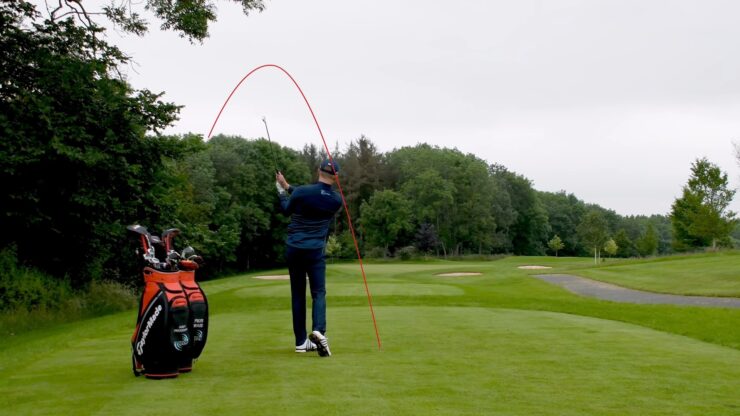
Want to tweak your launch? Here are some pointers:
- Grip and Posture: A stronger grip can promote a higher launch, while a weaker grip can do the opposite. Similarly, standing taller at address can help increase the angle.
- Ball Position: Moving the ball forward in your stance can promote a higher launch, while placing it back can lead to a lower trajectory.
- Club Shaft Lean: A forward-leaning shaft at impact can decrease the angle, while a neutral or backward lean can increase it.
Alway remember to Practice Drills and Techniques. Some inlcude
- The Tee Drill: Set up three tees in the ground – one for the ball and two more, a foot in front and behind. Practice hitting the ball without disturbing the other tees. This encourages a level strike and can help adjust launch angles.
- The Alignment Stick Drill: Place an alignment stick in the ground at your desired launch angle. Practice hitting balls trying to match that angle.
Interesting Fact: Minor adjustments in your stance or grip can change the launch angle by several degrees. It’s all about finding the sweet spot!
Technology in Golf
In today’s digital age, technology has become an integral part of refining our game. Launch monitors are devices that measure various aspects of your shot. These gadgets use radar or camera systems to provide real-time data, allowing you to understand and adjust your swing mechanics better.
How Data Can Improve Your Game
Data is power. By analyzing the numbers from a launch monitor, you can identify patterns, strengths, and areas that need improvement. For instance, if you consistently have a lower angle than desired, you can work on specific drills or make equipment changes to address the issue.
Pro Tip: Regularly reviewing your launch monitor data can help you track your progress over time. It’s a great way to stay motivated and see tangible improvements!
Troubleshooting Issues
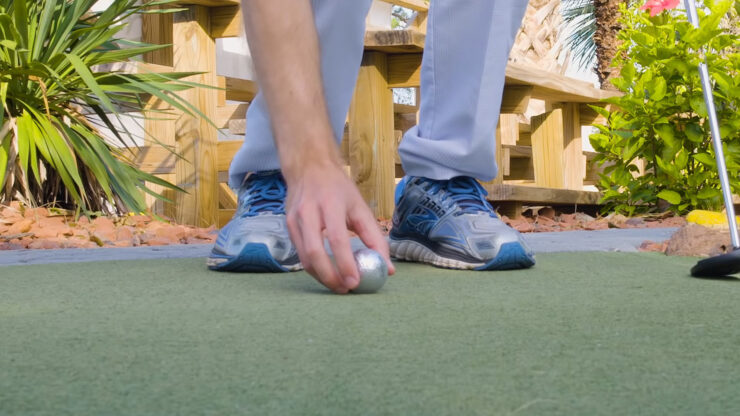
Facing issues with your launch? You’re not alone. Here are some common mistakes:
- Hitting Down on the Ball: This often results in a lower angle. The fix? Focus on a level or slightly upward strike, especially with the driver.
- Incorrect Ball Position: If the ball is too far back in your stance, it can lead to a lower launch. Ensure the ball is positioned correctly relative to your club choice.
If you’re still struggling, consider seeking help from a golf instructor. They can provide insights, drills, and feedback tailored to your specific needs.
Fun Fact: A slight change in launch angle can result in a significant difference in how the ball lands. Sometimes, a mere 1-degree change can alter the ball’s landing spot by several yards!
FAQ
How does launch angle differ from dynamic loft?
Launch angle is the angle at which the ball takes off relative to the horizon. It’s closely related to dynamic loft, but they aren’t the same. While dynamic loft refers to the loft presented at impact, the launch angle will always be a bit less than the dynamic loft but will have a value in the same ballpark.
What are the average launch angles for professional golfers?
On average, PGA TOUR professionals have a launch of 10.9 degrees with their driver and 14.1 degrees with a 6-iron. LPGA Tour professionals, on the other hand, have an average of 13.2 degrees with their driver and 17.1 degrees with a 6-iron.
How does launch angle influence the fitting process of golf clubs?
A critical parameter during the club fitting process. Achieving the right balance between launch and spin rate, based on a golfer’s club speed and ball speed, ensures that the golfer gets the most out of their clubs. An incorrect angle can lead to a loss of distance.
Can monitoring launch angle help in game development?
Absolutely! Monitoring is essential for total game development and creative visualization. Controlling your launch allows for better ball-turf contact, especially for less skilled golfers. As golfers become more skilled, they can use launch angle to develop shots that match course conditions and achieve consistent carry distances.
Conclusion
We’ve journeyed through the world of launch angles, from its basics to its impact on your game. Remember, the optimal launch angle varies for everyone. It’s about finding what works best for you and your unique swing.
By mastering your launch angle, you’re not just improving one aspect of your game; you’re elevating your entire golfing experience. With knowledge, practice, and a bit of tech, you can optimize your shots, impress your buddies, and most importantly, enjoy the beautiful game of golf even more.
Related Posts:
- Angle of Attack in Golf: Steep, Shallow & Tips to Improve
- Do Launch Monitors Work with Range Balls? Perfecting…
- How to Become a Certified Golf Instructor and…
- How to Improve Your Chipping and Pitching - Take…
- 12 Best Golf Balls for High Handicappers 2024 - Find…
- 11 Best Golf Cart Bluetooth Speaker 2024 - Elevate…

